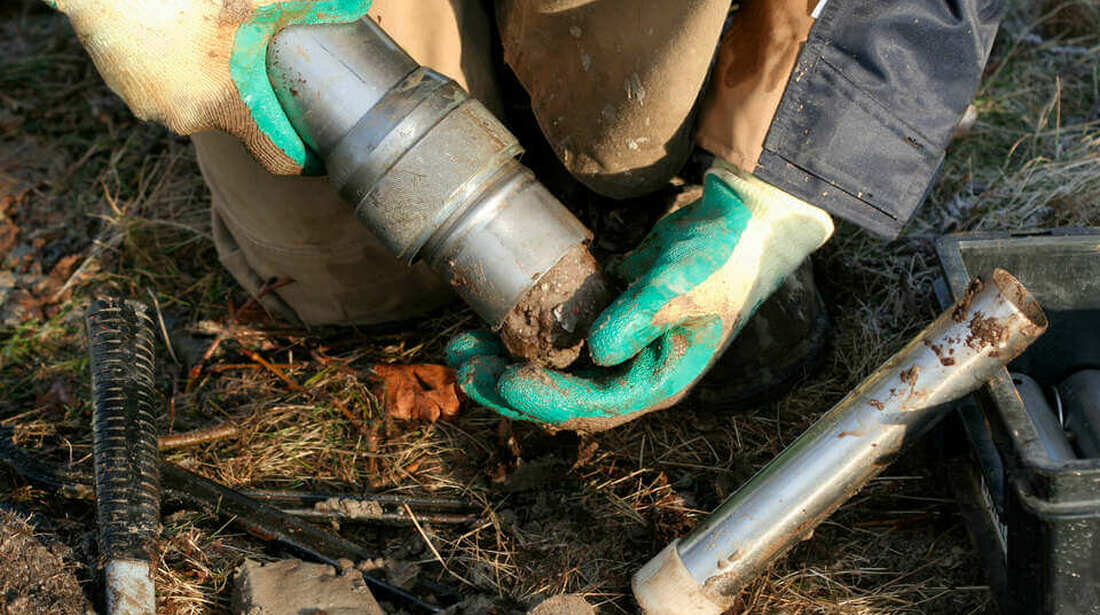The Oct. 23, 2023, Crop Progress Report states 59% of the nation’s corn crop and 76% of soybeans are harvested. This is the perfect time to begin planning for fall soil sampling.
“The farming season doesn’t stop after harvest,” says Tony Lenz, StineÒ technical agronomist. “As soon as you’re done in the field this fall, it’s time to start planning for the next season. Fall soil sampling is critical in determining what your crop took out of the ground this year so you can replace it in 2024.”

What will a soil test tell me?
A comprehensive soil analysis will calculate your levels of macronutrients, micronutrients, pH and CEC in the soil. Specifically, these elements work together to form a complete nutrition program for your crops. For example, macronutrients are the most common nutrients. Crops use more of these nutrients than any other. Primary macronutrients include nitrogen, potassium and phosphorus. Secondary macronutrients include calcium, magnesium and sulfur. Micronutrients, while important to plant health, do not need to be applied as frequently and in as high quantities as macronutrients. Micronutrients include boron, copper, chloride, iron, manganese, molybdenum and zinc.
Soil pH is the acidity or alkalinity makeup of the soil. Ideal pH levels should fall between 6.5 to 7.5, and 7 is considered the neutral range where nutrient uptake is ideal. Anything under 7 is more acidic and above 7 is alkaline. CEC levels determine the type, capacity and organic makeup of the soil and are critical to determining the soil’s ability to retain nutrients. CEC levels should always be considered when determining amount and frequency of nutrient applications. The higher the CEC level of your soil, the less likely nutrient leaching will occur in your field.
When growers get their results, it’s important to look at all the levels holistically as many of the nutrients work together. For example, sulfur plays a supporting role with nitrogen by helping plants metabolize nitrogen. Both nitrogen and sulfur need to be applied early in the season, so knowing where you’re at for the two nutrients is important to figure out before the planting season.
What time of year is best for soil sampling?
The importance of soil sampling in agriculture has no limits. You can take samples at any point throughout the year if conditions are right, but most experts suggest sampling after harvest in the fall or before planting starts in the spring.
“Soil sampling is most often either done in the fall after harvest or in the spring prior to field work but should always be done prior to applying fertilizer,” recommends Meaghan Anderson and Rebecca Vittetoe, field agronomists for Iowa State University Extension and Outreach. “It is important to be consistent in the timing of soil sampling (i.e., always in the fall or always in the spring). Samples should be taken every 2 to 4 years or once in a crop rotation,” they add.
What is the proper way to take a soil sample?
Soil sampling can be tedious; it takes time and careful handling. The first step we recommend to our grower customers is to consult with a certified soil testing lab or soil testing expert to obtain their local recommendations for conducting proper soil sampling. These experts will also help you determine factors such as sample depth (typically six to eight inches), the best tools for collecting samples (soil probes, buckets, sample bags, etc.), ideal core size and amount of cores for accurate results (10 to 15 cores for a composite sample), and where and when to collect samples to ensure accurate results. Some soil testing experts even have soil testing kits available.
There are a few different methods of soil sampling. Some may take whole field samples, but most samples taken from crop fields are done by grid sampling. No matter the soil sampling method, preplanning is critical.
“Growers should have a good idea of the fields they want to take samples from before they start the process,” notes Lenz. “For example, if you’re out combining and find areas where your crops are underperforming, take note of that field and map out a plan for soil sampling so you can see where your nutrient levels are for that particular spot."
Another consideration when conducting soil sampling is the moisture level of the soil. Iowa State Extension field agronomists Meaghan Anderson and Rebecca Vittetoe note that taking samples after prolonged periods of drought can affect the soil analysis by making test results appear lower than they are. They recommend delaying taking a sampling for a week after a rainfall that soaks through the typical sampling depth of about six inches.
Midwest Laboratories also provides some great guidance for soil sampling, but growers must remember that best practices can vary from region to region.
Don’t forget about soybean cyst nematodes.
Soil sampling is also valuable in detecting potential pests lurking underground, including soybean cyst nematodes (SCN). This is especially important as many areas of the U.S. experienced dry conditions this year. Experts from South Dakota State University Extension say SCN become more prolific in low-moisture conditions.
“SCN is incredibly damaging to soybean yields and should not be overlooked when conducting soil sampling,” says Lenz. “Growers who experienced dry conditions this year need to be prepared for an increase of SCN in 2024.”
Experts from the University of Nebraska’s Institute of Agriculture and Natural Resources note SCN can cause up to 40% yield loss in soybeans and 30% loss before symptoms are even noticeable, making SCN an “invisible yield threat.”
“Growers can ask their certified laboratory to conduct a test for SCN with their regular soil sample but need to ensure they have taken samples appropriately,” adds Lenz.
For more information on soil sampling and what to look for, reach out to your local Stine sales rep or regional sales agronomist.
Related Articles
-

MX Series Corn by Stine®: Proven performance for 2026
January 2026 in Agronomy
-

Start strong with Stine®: Maximizing your 2026 potential
January 2026 in Agronomy
-

Stine® to offer Syngenta’s Victrato® soybean seed treatment in 2026
December 2025 in Agronomy
-

Use Stine’s XP® seed treatments to prevent early injury to your crops
December 2025 in Agronomy



